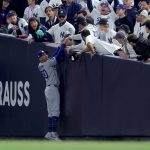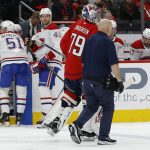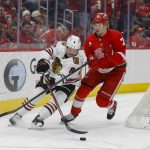I have a love-hate relationship with heat tools. On one hand, I love what they do, transforming my normally limp and lifeless locks into a style that has movement and body. I’m someone who has naturally fine and dry hair, so that’s a big deal to me. On the other hand, I hate the damage they can cause with every styling session. All I have to do is use a cheap flat iron, curling iron, or hair dryer for a couple of weeks to see breakage, dullness, and split ends appear in droves.
That’s why it’s critical to find the right heat tools—those that will quickly and effectively style my hair while also minimizing damage. So far, I feel confident I’ve found the right flat irons and the right curling irons, but I’m still unsure about which hair dryers are best to use on my dry, damaged hair. So as any beauty editor would do, I turned to the experts and the internet to find out.
Before we talk about the exact dryers that experts and the internet recommend, let’s talk about what makes a good hair dryer in the first place. According to Jamila Powell, founder of Naturally Drenched and owner of Maggie Rose Salon, it all comes down to three things—heat control, airflow, and wattage.
“Traditional hair dryers can cause damage and frizz because of a lack of heat control and airflow, but ionic and ceramic hair dryers—preferably with heat control—can effectively dry your hair with minimal damage,” she says. “Another thing to pay attention to is the wattage of your hair dryer. Wattage determines heat and drying speed, and a dryer with a wattage around 1400 will effectively dry all hair textures without going overboard and causing damage.”
So in other words, blindly choosing any old hair dryer you find at the drugstore simply won’t cut it. Not only could it prove to be extremely damaging to already damaged hair, but it could lack efficacy too. And who wants to stand in front of a mirror with a tired arm holding up a screeching hair dryer any longer than they have to? Not me. Keep scrolling to see the seven best hair dryers for damaged hair.
Lulu Pierre is a hair expert and founder of Boho Locs. Her top hair-dryer recommendation is this one from DevaCurl. It was specifically designed for wavy and curly hair. “I love the DevaCurl DevaDryer with the diffuser attachment,” she says. “It’s an ionic dryer that’s perfect for natural hair because its negative ions dry hair quickly while the diffuser lets the airflow surround curls evenly. The shape of the diffuser is also great for scrunching, which helps set curl patterns without causing more frizz.”
With clients such as Reese Witherspoon, Nicole Kidman, Jennifer Lawrence, and Kamala Harris, hair expert Cory Aaron Scott knows a thing or two about the importance of a good heat tool. His go-to hair dryer is the Parlux Ionic and Ceramic Professional Hair Dryer. “I have used this every day for over a decade,” he says. “It has been reliable, easy to use, and extremely lightweight. The price is very reasonable considering you’ll be using it for years to come.”
This T3 dryer is a favorite of beauty editors far and wide for a few different reasons. First, it has customizable heat (thanks to five different heat settings), so you don’t have to fry your hair in the name of an at-home blowout. Second, it has an auto-pause sensor that stops airflow when you release the handle. Third, it features a “volume booster” to help inject life and texture into the hair without the need for excess product.
Big surprise—the Dyson hair dryer made the list. While the price tag is certainly, um, imposing, there’s a reason so many people swear by this machine. It’s specifically engineered to protect the hair from damage, it promotes shine and smoothness, it’s super lightweight, and it comes with easy-to-change magnetic styling attachments.
This ceramic and ionic hair dryer from Revlon is a customer favorite on Amazon. That’s probably because it boasts infrared heat, which can cut drying time and give hair a high-shine finish. It also doesn’t hurt that it has two heat settings, a cool shot button to seal the hair and concentrator and diffuser attachments.
Speaking of Amazon favorites, this hair dryer from Remington is a best seller—probably because it was created specifically with damage protection in mind. It features ceramic, ionic, and tourmaline technology; three heat and two speed settings; and 1875 watts of power. It’s also only $17 right now.
This little hair dryer is iconic, and not just because of its spritely shade of mint green. It’s lightweight and compact; features eight heat, speed, and ion settings; and has a motor that lasts up to 2000 hours. Just like the brand’s 1.25-Inch Ceramic Flat Styling Iron ($200), which I swear by, I trust this to style my hair sans damage.
Even though the right hair dryer can make a world of difference in the health of your hair, it’s not the only variable to consider. As Powell puts it, “choosing the right hair dryer is only half the battle!” You also have to consider how you’re using a hair dryer and what products you’re using to protect your vulnerable strands from thermal damage. If you’re not using anything, then it’s time to start. The pros have some suggestions.
Caring for your hair starts the second you step out of the shower. Before reaching for your hair dryer of choice, Powell recommends making sure your hair is already mostly dry. This will cut down on heat exposure, which will reduce potential damage. “You can air-dry or use a microfiber towel before you start blow-drying,” she says.
Next, it comes time for a heat protectant, and please, for the sake of your strands, don’t skimp on this part. “Applying heat protectant is key, and it’s a step that I see a lot of people neglecting because hair dryers seem ‘safer’ when they’re temperature controlled,” Powell says. “Heat is heat, so your hair needs protection no matter what your dryer promises.”
Scott recommends this hair milk since it’s so lightweight and hydrating. It’s also multi-beneficial. It offers heat protection along with smoothing and detangling effects.
Scott recommends starting an at-home blowout by rough-drying your hair. “Rough-dry your hair as much as possible,” he says. “When it comes time to smooth the hair, I always start with the hairline, taking half-inch sections, blow-drying the hair away from the face, and using lots of tension with a boar-bristle round brush. Keep taking half-inch sections until every section is smooth and shiny.”
Powell says drying your hair in sections is the key to replicating a professional salon blowout at home. “This will help ensure even drying without causing a full head of frizz that results from the cuticles getting pushed up in different directions,” she says. Whatever you do, don’t touch the nozzle of the hair dryer to your hair. Instead, always keep it a few inches away from your head. “It’s really damaging having that hot material touching your damp hair,” Scott adds.
This hair mask is formulated with 20 nutrient-dense Indian herbs, oils, and flowers.
A gentle hairbrush for detangling.
A nourishing shampoo is a must for damaged hair.
A silk pillowcase reduces friction on damaged hair, which minimizes breakage.
This hair oil from Olaplex can strengthen the bonds in your hair.
This article was originally published at an earlier date and has been updated. Next, These 15 Shampoos and Conditioners Will Help Stop Breakage in Its Tracks







